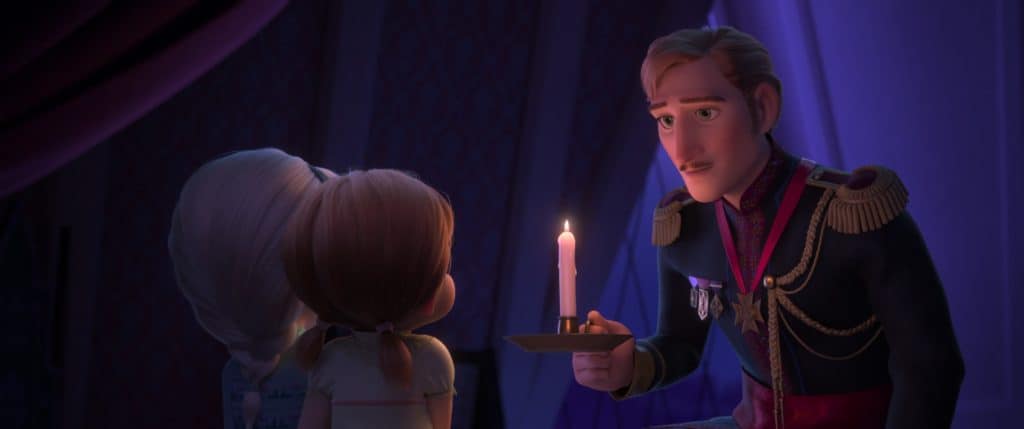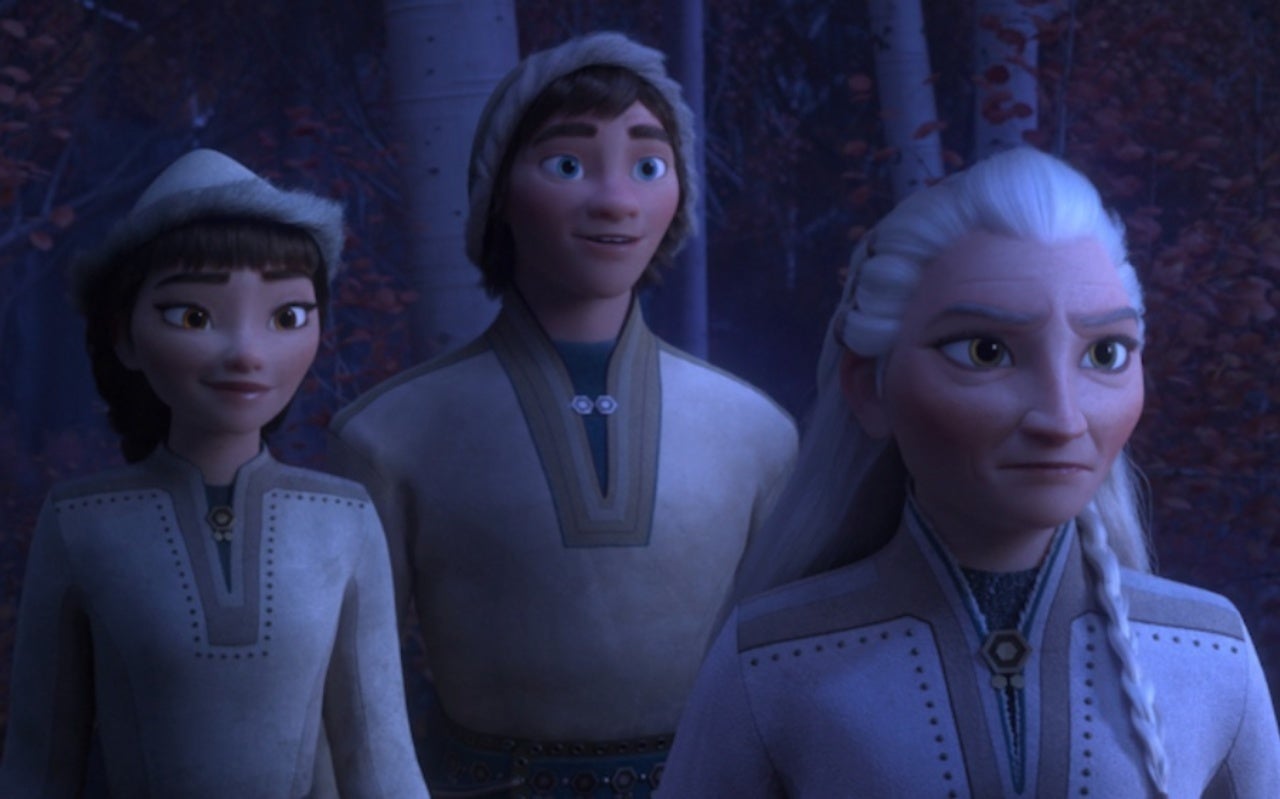Frozen has been the talk of the decade, it’s been hailed as the first Disney film whose revolutionary final ending featured a sweet story where the sisters, Anna (Kristen Bell) and Elsa (Idina Menzel), used their loving bond to save themselves and their Kingdom: Arendelle.
Based on the trailer for the sequel, Frozen II, we get a dramatic yet innocent plot that could have been generic, simple and safe. Instead, screenwriters Jennifer Lee and Allison Schroeder unprecedentedly (for a kids’ Disney film) tackle the complex issue of colonisation and justice for Indigenous communities.
The film’s release last week coincided with Thanksgiving in America, which is supposed to celebrate the Harvest Feast shared between the English and the Native Americans. This coincidence underlines the film’s overall message.
The film’s prologue features a bedtime story that Anna, Elsa and its audience become entranced by. Their father tells of a magical community that relied on nature’s power and resources which echoes the tale of Elsa’s own abilities. We are told that as a boy, Elsa and Anna’s father watched as his father (their grandfather) and Arendelle’s neighbouring magical community attempted to establish a union.
Arendelle offered peace by building a dam, except, after the gesture, Arendelle gets attacked by the community and their father gets saved from the fight by a mysterious woman. After the attack, a heavy mist fell over the land and it became isolated and impenetrable, named the Enchanted Forest. The story that their father tells launches us into a consideration of the white man’s control of a narrative.

With the close of the prologue, the audience seemed to receive the safe, generic plotline expected of a sequel to a multi-million dollar franchise. The song Some Things Never Change updated us on Elsa and Anna’s now ‘perfect’ life, but as always, Elsa has a secret: she can hear a “secret siren” that calls her “into the unknown.” This “secret siren” results in Arendelle’s undoing as the four elements: Earth, Fire, Water and Air disappear from the Kingdom, forcing its residents to escape to the mountains.
Following the sound, Dream Team: Elsa, Anna, Kristoff, Sven and Olaf journey to the Enchanted Forest, which could only be opened by Elsa. In the Enchanted Forest the team are faced with the rivals: the Arendellian army and the magical, Indigenous community named the Northuldran Tribe. The team refuse to select a side, and this is where the screenwriters reveal the complexity of the film: “the past is not as it seems” ringing in Elsa and Anna’s ears. This metaphorical line echoes the complicated issue of White erasure and domination of the past where Western, civilised communities capitalised upon and reshaped a narrative to suit their agendas.

Elsa and Anna are sent on a journey to discover Arendelle’s past, and as the line tells us, their father’s story of their history omitted the truth: that the fight between the two communities was started by their grandfather. The white, wealthy Kingdom of Arendelle betrayed the natural, Indigenous community by attempting to control them with the building of the dam, and by stabbing the Indigenous leader.
As Anna notes, “grandfather had the weapon, the leader of the Northuldran community was innocent and doing nothing!” Of course, this underlines the emerging understanding that colonisation was an attempt to control, capitalise upon and eradicate the Indigenous communities and their presence on a profitable land.
We know that Disney had the intention of exploring these themes, because the producer Peter Del Vecho and the Sámi tribe’s parliament representatives (which the Northuldran tribe from Frozen 2 was based upon) entered into an agreement that outlines their “desire to collaborate with the Sámi in an effort to ensure that the content of Frozen 2 is culturally sensitive, appropriate and respectful of the Sámi and their culture.”

Despite Western countries’ slow acknowledgement of their ancestors’ damage and abhorrent actions towards Indigenous communities, they ignore the issue and refuse to take adequate responsibility for the actions of their past. Elsa and Anna sacrifice their Kingdom (which, in true Disney fashion, the resolution results in Arendelle’s safety) to remove the dam (which was a metaphor for colonisation and white control). The sisters declare that they need to “right the wrongs of their past” which countries like Australia and America are yet to do.

The resolution of the film emphasises its message, that white communities need to stop ignoring their past mistakes and move forward by addressing them through the unionisation with the leaders of the communities that were impacted by their actions, and creating policies to address these issues in order to bring justice to their societies.
Whilst life is not nearly as simple as a Disney film, and these are real, complex issues it highlights that Western countries need to do more. They need to attempt the complex solutions that may bring justice to a community that has been so severely wronged.
The film’s glaringly obvious message (only the truly ignorant could pretend it wasn’t there-even my little sister looked up at me with wide-eyes full of understanding) unfortunately became the elephant in the cinema. Amidst the chatter of little voices, claps and tears (these were probably mine) at the end of the film, a resounding question seemed to resonate with the adults in the cinema: why would Disney choose such a complex issue to frame Frozen II around?
With the mainstream success of Frozen, Disney was guaranteed to receive millions of views for its sequel, so selecting a controversial issue (it seems very wrong to use this phrase about something that should be widely accepted by society) would not have harmed its commercial revenue and viewership considering it has made over 700 million dollars in its first weeks of release.
The screen writer and co-director Jennifer Lee, who is also the Chief Creative Officer of Walt Disney Animation explains that Frozen II is:
“A reflection of growing up and becoming adults in the world…we think particularly of kids today, they’re wrestling with so much. It’s really about reflecting on all the issues that we’re facing rather than telling you how to face them…we all sit here with the stakes of our families, the stakes of our community, the stakes of our environment, the stakes of our world, and we wrestle with it…we wanted to touch on all the parts of growing up that are extraordinarily hard to navigate.”
Lee’s comments are reflective of the current society we live in, where children and teenagers alike are the ones who are standing up for things that adults are burying their heads into the sand about. (Think: Climate Change and Greta Thunberg.) If Disney continues to present societal issues then perhaps more and more youth will continue to tackle the issues we have spent decades attempting to solve. Lee isn’t wrong, the youth are the future, and keeping them informed is only beneficial to society. It’s refreshing and brilliant to have a children’s film send these messages.
Overall, whilst Frozen II was sweet, enjoyable and brilliant, it didn’t feel as cohesive as a classic Disney film should have. Some children seemed slightly restless towards the end (although, they are children so…) and this was likely a result of the film’s constant yet inconsistent action. It just felt like it was doing too much to appease its audience.
Of course, this doesn’t take away from Frozen II’s stellar message and really beautiful songs; The Next Right Thing and Into The Unknown are definite favourites of mine. I will probably watch the film at least three times before the year is out, and if I’m lucky, I will get to take my little cousins and watch their faces light up as Elsa and Anna grace the screens once more.
If you get the chance, take yourselves to the endearing and charming film that is Frozen II, I guarantee you won’t be sorry.
Subscribe to FIB’s newsletter for your weekly dose of music, fashion and pop culture news!






